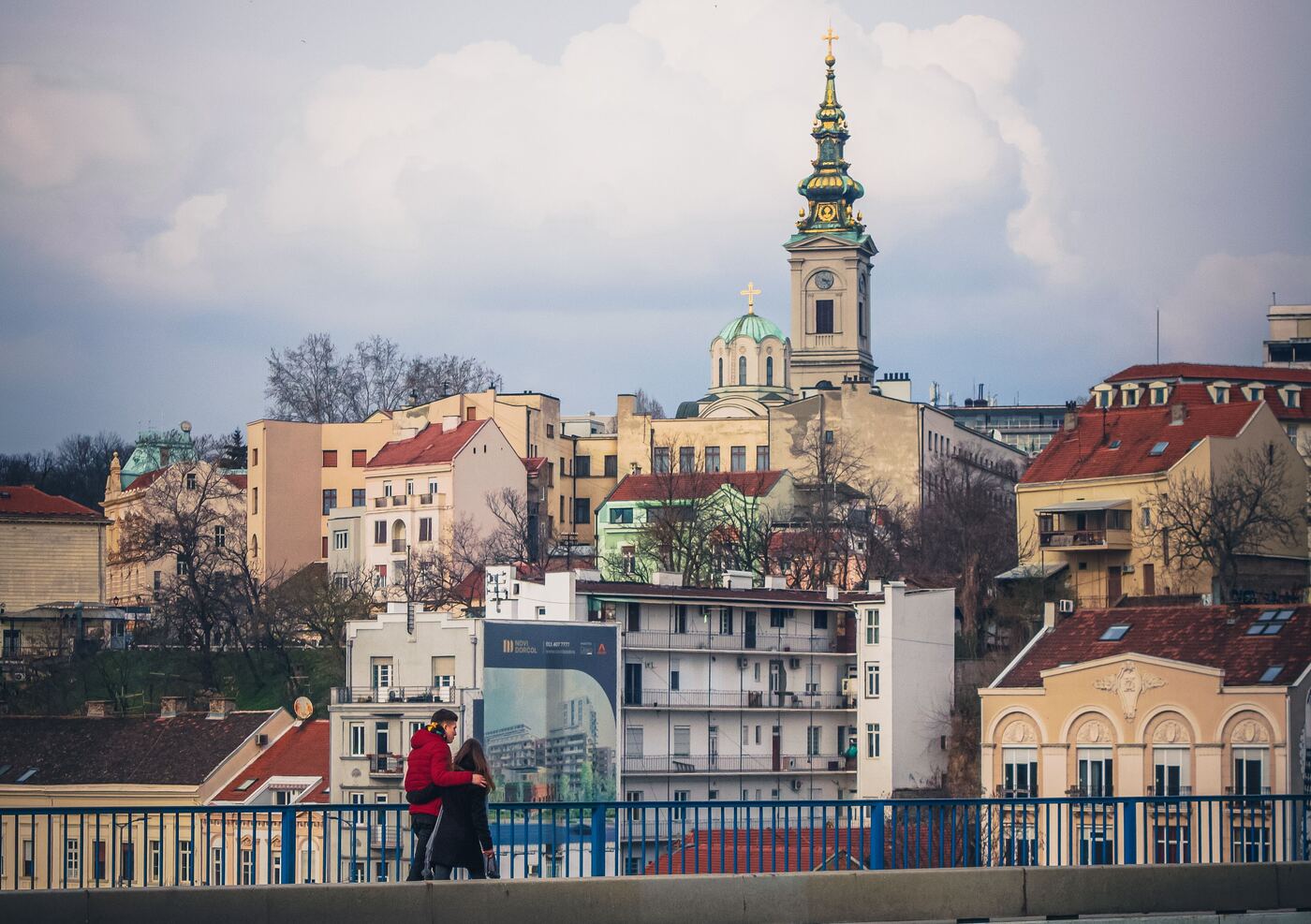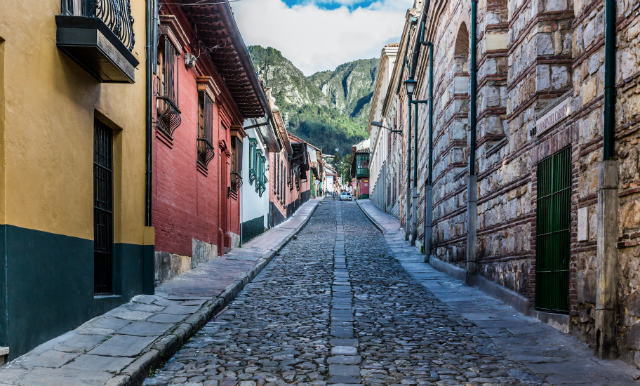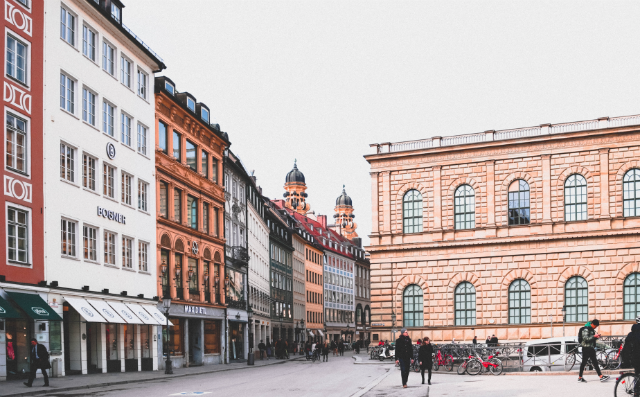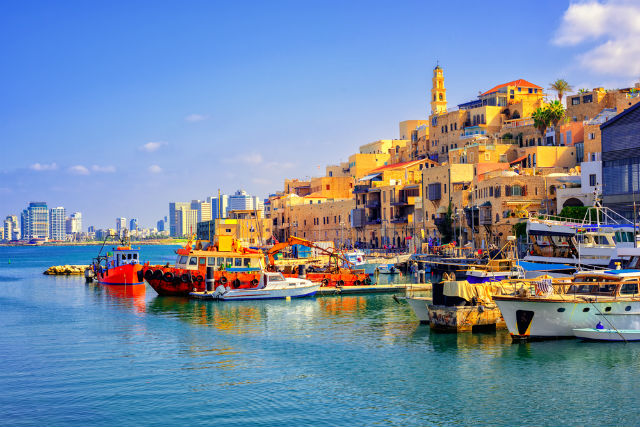1. Lisbon, Portugal

Built on several rather steep hills, you’ll have thighs of steel after a couple of days wandering around Portugal’s trendy capital (at least this writer did). Over recent years, Lisbon has emerged as one of Europe’s creative hotspots, luring in artsy types with its affordable housing and studios.
Check out Lufthansa’s Lisbon city guide
The growing creative community has influenced Lisbon’s cultural offering: galleries, hipster cafes and artistic ‘mini-cities’ have sprung up across the city. Don’t miss: the hip LX Factory, a vibrant cultural and foodie hub in a former 19th century industrial site; Mouraria, Lisbon’s coolest district packed full of hidden gems like Maria da Mouraria, where you can enjoy local food and music, or Cortiço & Netos, a shop stocking beautiful azulejos, the city’s ubiquitous tiles.
If you find yourself in the touristic area of Belém, queue at Pastéis de Belém for a Pastel de nata (Portuguese custard tart), it’s worth the wait.
2. Tel Aviv, Israel
Tel Aviv’s incredible cultural scene is only rivalled by its restaurants, nightlife, beaches and bars. In short, it’s one of the world’s most vibrant and current cities.
The Mediterranean metropolis has near-perfect weather all year round, ideal for enjoying its beautiful beaches like Hilton Beach, famous for its water sports, or Bograshov Beach, a sandy beach right in the centre of the action.
Hedonists will no doubt be drawn to Tel Aviv for its lively nightlife. There’s no shortage of bacchanalian bars and clubs; while you’re in town stop by Voodoo, a large terrace bar that invites patrons to ‘unite as one under an enchanting Voodoo spell’, or drop into Kuli Alma, a cool underground nightspot with art exhibitions, live music and vegetarian Israeli food.
Grab a second-hard bargain from an eclectic stall at Jaffa’s flea market; pick up some spices or simply sit and enjoy the vibe at Shuk Ha’Carmel, Tel Aviv’s largest market. Dip into some hummus at Abu Hassan, one of Israel’s oldest and most famous hummus restaurants, and wander around Florentin, a trendy neighbourhood full of galleries, bars and street art.
Check out Lufthansa’s Tel Aviv city guide
3. Budapest, Hungary

Hungary’s edgy capital city is a cultural mishmash of Eastern and Western European influences. Its complicated history, which includes a string of invasions and a communist occupation, has given birth to a rebellious and creative underground scene.
With its wide streets lined with neo-gothic cathedrals, crumbling ‘ruin bars’, thriving street food scene and even Turkish tombs (you heard us right), you can delve into an eclectic mix of old and new, classical and cutting edge.
In this city of thermals baths, it would be rude not to dive in. Head to Rudas Baths to experience 16th-century baths or take a dip at the ornate Art Nouveau Gellert baths. Stroll around the old Jewish Quarter, Budapest’s coolest spot, stop by Gettó Gulyás, a restaurant serving traditional Hungarian dishes, or head to the neighbouring Palace Quarter to test the gastronomical delights at Padron or Puglia Al Dente.
Check out Lufthansa’s Budapest city guide
4. Turin, Italy

Turin, the capital of northern Italy’s Piemonte region, might be most famous as the birthplace of Fiat, but there’s much more to this unsung city than its nippy little cars.
Sinfully overlooked by travellers, Turin is quietly home to one of Europe’s most thriving art scenes and is a hidden gem for foodies and craft beer lovers. With its grand boulevards, historic squares, verdant parks and myriad museums, it’s a city breaker’s delight and ‘the chocolate capital of Europe’. So indulge your sweet tooth in a local chocolate house or grab a gelato because, you know, ‘when in Italy’.
You won’t go hungry in Turin – from simple trattorias serving all the Italian classics to a growing number of meat-free restaurants like L’articiocc or vegan eatery Ratatouille, foodies can get their fill and go home full.
Check out Lufthansa’s Turin city guide
5. Belgrade, Serbia

Belgrade’s reputation as a party city isn’t unfounded. Its bustling nightlife is world-famous but that’s just one facet of this gritty city’s allure.
Slap bang on the confluence of the Danube and Sava rivers, Serbia’s capital has a rich history covering almost two millennia. It won’t be taking home the crown for Europe’s most beautiful city anytime soon – although its brutalist architecture does have its charm – but what it lacks in pretty it makes up for with its ever-evolving creative scene and buzzy cafe culture. That’s not to say it doesn’t have a few architectural gems like the four-star Hotel Moskva, one of the city’s most famous landmarks, and Gardos Tower, a memorial tower in Zemun.
No city break is complete without taking getting stuck into the local cuisine. Enjoy authentic Serbian dishes and wine at Bistro Grad Hometown Food, guzzle cheap cocktails in the garden of Blaznavac and, if you are there to party, drop by Drugstore and dance ‘til dawn.
Check out Lufthansa’s Belgrade city guide
6. Cape Town, South Africa

This coastal city in South Africa is cosmopolitan but also quintessentially African. With its craggy mountain ranges, exquisite beaches and stunning scenery, Mother Nature must have personally dropped in to bless this urban oasis.Depositphotos
Table Mountain is among the world’s most instantly recognised landmarks. The flat-topped mountain overlooking the city was voted one of the New Seven Wonders of the World in 2011; it’s also home to a staggering host of rare indigenous and near otherworldly flora.
Eat authentic Cape fish and chips at Kalky’s in Kalk Bay old fishing village or grab a coffee and pastry at nearby Olympia Cafe and Deli while you soak in the water views.
The gin resurgence is taking South Africa by storm and Cape Town has enthusiastically embraced the trend. The city’s gin scene is booming with locals both crafting the spirit and serving it up in local gins bars like the eponymously-named The Gin Bar and Mother’s Ruin Gin Bar.
Check out Lufthansa’s Cape Town city guide
7. Shanghai, China

China’s biggest city might be known for its imposing skyscrapers and its famous waterfront The Bund with its hodgepodge of architectural styles, but beyond that, it’s a hip and contemporary city with a flourishing art culture.
For a taste of the contemporary art on offer, head to Rockbound Museum or check out media art and architectural design institution OCAT. If you like your city break with a side of history then the Propaganda Poster Art Centre, with its collection of propaganda posters from the Maoist period of communist China, should catch your fancy.
Of course, you can’t explore on an empty stomach, so queue with locals at Bao Luo to enjoy some great dim sum and make your way to the Old Shànghǎi Teahouse set in a temple from the 1930s to sip on a cup of tea.
Check out Lufthansa’s Shanghai city guide
8. Mumbai, India

It’s not a stretch to say that Mumbai, India’s hectic and most populous city with its famously happening nightlife, doesn’t sleep. Many of the city’s eateries and open 24/7 so you can literally explore around the clock.
Of course, there are plenty of daytime activities for those of you who aren’t nocturnal. Hang out at (perhaps the most famous) Parsi café Britannia & Co for a historical and cultural experience. Next, head to Kala Ghoda, Mumbai’s art district which is packed full of museums and art exhibitions like the Jehangir Gallery. Even the streets are a kind of gallery, with artists sharing their work on the pavements.
If you need a break to escape the city chaos, make your way to the Sanjay Gandhi National Park with its diverse plant species, reptiles and animals.
Check out Lufthansa’s Mumbai city guide
9. Bogota, Colombia
 Photo: STYLEPICS/ deposit photos
Photo: STYLEPICS/ deposit photos
Travellers often bypass Colombia’s capital in favour of nearby colonial city Cartagena, but 2019 is the year of Bogota.
Instagrammers will revel in the city’s colourful street art and its rooftops cluttered with electric sculptures. Sophisticated and modern, Bogota is one of Latin America’s most cultivated cities, filled with art galleries, boutique shops, cool bars and spectacular panoramic views.
There’s a strong coffee culture in Bogota so stop by Azahar Cafe in Park 93 for a mug of farm-fresh roasted coffee or try one of the 10 different single-origin Colombian beans that are rotated at Cafe Cultor in trendy Zona G.
If you really want to experience the city like a local, have a go at playing ‘tejo’, a popular local sport which involves throwing metal spheres at small targets containing gunpowder with the aim of creating an explosion on impact (yes, really). Oh, and did we mention tejo is a drinking game? Sounds perfectly safe…
Check out Lufthansa’s Bogota city guide
10. Munich, Germany
 Photo: Anastasia Dulgier/unsplash
Photo: Anastasia Dulgier/unsplash
Munich, Bavaria’s chic capital, may be most famous for Oktoberfest but it also ranks as one of the world’s most liveable cities. By extension, it’s also one of the most visitable cities.
Stroll through trendy Schwabing, Munich’s artistic quarter, with its bohemian bars and boutiquey stores. Browse the second-hand bargains at Midnightbazar, a night-time flea market packed with vintage steals. Kick back with a beer in Augustiner-Keller, a 200-year-old beer garden, or in Park-Cafe, a beer garden in front of a traditional 1937 Bavarian building.
Go native and enjoy the German afternoon tradition of Kaffee und Kuchen at Cafe Luitpold or try out some traditional Bavarian food at Wirtshaus Hohenwart. Just a couple of days in Munich will have you wondering what you ever saw in Berlin.
Check out Lufthansa’s Munich city guide
This article was produced by The Local Creative Studio and sponsored by Lufthansa.




 Please whitelist us to continue reading.
Please whitelist us to continue reading.